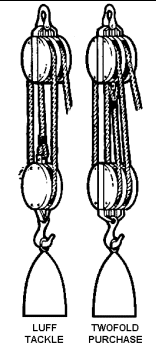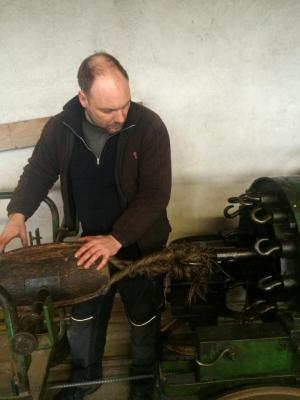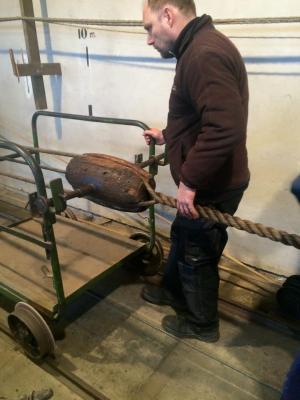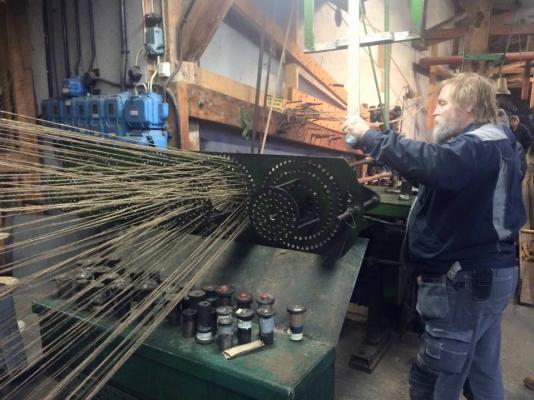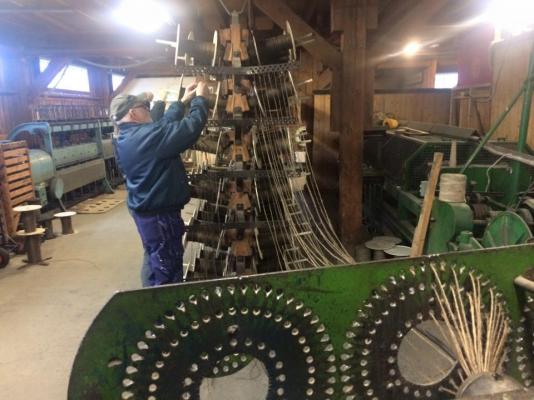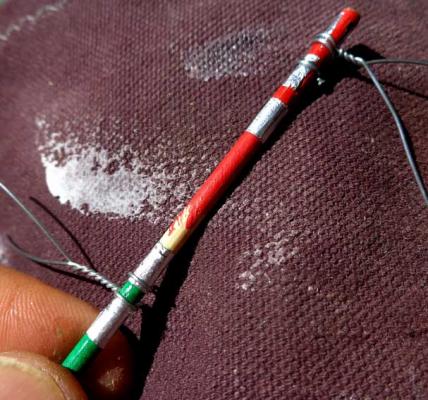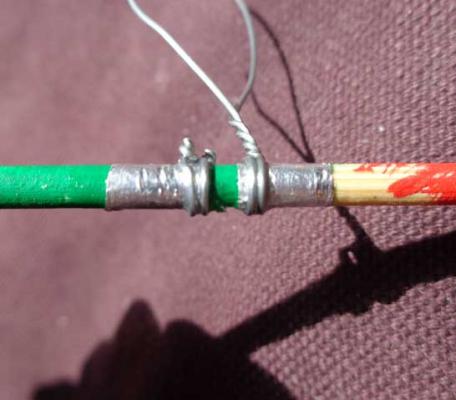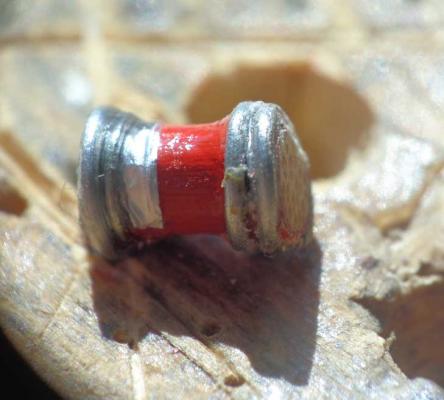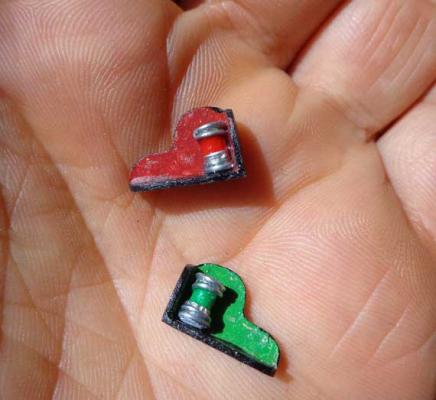
JerseyCity Frankie
Members-
Posts
1,338 -
Joined
-
Last visited
Content Type
Profiles
Forums
Gallery
Events
Everything posted by JerseyCity Frankie
-
Now for something entirely different - card model
JerseyCity Frankie replied to Kurt Johnson's topic in Card and Paper Models
There is an entire section set aside for card models. But please title your post in such a way that the subject you are discussing is clear. Titles like "something completely different" don't shed any light at all on the contents of the post. -
I am not familiar with the kit so I cant say with certainty, and I have certainly been sure I was right about something and was proved wrong in the past so now I have learned not to rashly say "I know this is how it is". But having said that I wouldn't have written if I didn't think there was something fishy in denmark. I paused just now and glanced at some books I have looking for ships boat rigging, and all the gaff rigged ones I found are peaked up high.
- 52 replies
-
- model shipways
- 18th century longboat
-
(and 1 more)
Tagged with:
-
Uh oh! I hate to be the bearer of bad news but I THINK you may have put the mainsail on backwards. I feel the part laced to the mast should be the part that is farthest aft and vice versa. The tip off is that the peak of the sail, the uppermost aftermost corner on this sort of fore-and-aft sail is usually distinctly higher than the other upper corner. It would be a shame to get that part wrong since the rest of the work on the model looks really good to me.
- 52 replies
-
- model shipways
- 18th century longboat
-
(and 1 more)
Tagged with:
-
Sounds like you are describing a Two Fold Purchase that has been configured as a Luff Tackle, but why use the wrong block? I can't think of a reason to use a double block as a single unless as a stop gap with no single blocks aboard ( as mentioned above) But its hard to imagine a vessel like Bounty short of single blocks. In the diagram you have, is the line made off on the lower block sheave with a loop knot, or a splice? If its a splice I would have to throw my hands in the air and say its crazy, since this would imply its intended to stay this way whereas a knot could be cast off easily. But the use of a knot still leaves the question of why a double.
-
Rob Wood expressed some dismay I took the topic over to "Museum Quality" and we should never hijack a topic so I apologize. Maybe that nomenclature topic needs its own heading. Back to the other issues: like the ban on cyanoacrylate glue. I have seen many examples of people claiming it is not stable and that over time it will cause rigging fiber to fall apart or some other awful thing. This is the chief reason none of my models could be accepted by the U.S.Navy. ALL my models have relied heavily on cyano glue as I suspect many of the models of those reading this do too. I remember seeing television ads for Crazy Glue as a child in the 1970's and I would bet that most ship models built from 1980 on use the stuff. Have any of you guys had a cyano built model show signs of deterioration due to the glue?
- 16 replies
-
- Specifications
- US Navy ship models
-
(and 1 more)
Tagged with:
-
You appear to think I am attacking the reputation or knowledge of Mr Wegner but this is not the case. I'm pretty sure everything I have to say about the issue is clearly laid out in what I have written above, without ambiguity and certainly without criticism of mr Wegner. I think there IS reason to question the use of the term, and it is not nitpicking. One has only to casually glance at ship models being offered for sale online to see the term "Museum Quality" used liberally to describe any sort of ship model regardless of quality. Thanks Trippwj, the PDF document you posted is the nearest approach I have seen to clearing up the definition. But I see Chapelle himself writes: "The workmanship to be of museum quality throughout." without providing the definition.
- 16 replies
-
- Specifications
- US Navy ship models
-
(and 1 more)
Tagged with:
-
I have no doubt that Werner would know "museum Quality" when he sees it! But can he, or anyone, define it? In my opinion you have to have a definition everyone can agree upon if you are going to use a term (as it is used above) as a criteria to be met. Without a definition of what "museum Quality" means, there is no fair way to include or exclude a model based on this nebulous idea. Without an exact definition there is no way to say a model falls short of, meets or exceeds the criteria, since no criteria has ben defined in an unambiguous language. Its like saying "models must be really nice". Within the document above are listed MANY criteria, but the term "Museum Quality" is ADDED to those things, not defined as being MADE UP of those things. In other words, they appear to be saying that not only must the model follow the listed use of materials and practices, it must ALSO be "museum quality". Which suggests your model could meet and exceed all the standards listed above, but if it isn't also "museum quality" it will fail to meet all the requirements.
- 16 replies
-
- Specifications
- US Navy ship models
-
(and 1 more)
Tagged with:
-
Guess none of my models are US Navy good enough! But on the other hand I will revel in the freedom to use any adhesive material or paint technique that I feel gives the best results. Nothing against the Navy for insisting on standards though, certainly you have to have controls in place for Museum work. On the other hand I can fault this list of requirements for including such a vague language as "Models shall be museum quality". Is the phrase "Museum Quality" the most abused term in all of ship modeling? I would say its in a dead heat with the term "master Ship Modeler". Both of these terms are overused and neither has an agreed upon standard definition. Whenever I read these two terms I instantly assume the person using them is not as fully informed of ship model concepts as they should be.
- 16 replies
-
- Specifications
- US Navy ship models
-
(and 1 more)
Tagged with:
-
Pride of Baltimore - question of a rope
JerseyCity Frankie replied to Shura's topic in Masting, rigging and sails
This video shot on Pride is very clear and crisp AND it can be paused at intervals where mast details are visible. http://www.pride2.or...te-Hathaway.mp4 -
Contemporary sources often mention footwear on sailors, sometimes they list two or three different types. My guess is that if the activity involved water underfoot then feet were likely bare. But lets face it those ships went everywhere in all kinds of weather. Clifford Ashley makes a point of mentioning that shoes were not warn in the whaleboats during the chase. Eric Newby and Allen Villiars talk a lot about the pros and cons of leather verses rubber boots in late stage sale vessels. Onmodern sailing vessels it is still a matter of "different ships different long splices". Its an issue that is addressed when you go aboard and you will soon learn which way the captain wants things. But some modern ships are 'barefoot OK" and some are not. The ones against are concerned with the astonishing number of low slung iron objects on deck and on these ships frequently even open toed sandals are prohibited. There is a similar debate about wearing gloves. Not wearing gloves when working aloft allows a better grip on the rigging and most ships prohibit the wearing of gloves aloft. I have seen newbies go aloft with gloves on only to remove them themselves when they realize its not helping them but in fact keeping them a tiny bit less secure up there. Wearing gloves while handling line would appear to be a no-brainer but in reality better line handling habits are formed using the bare hand. Gloves encourage the wrong headed practice of letting the line slide through your hands while easing it, and this can lead to loss of control. Contemporary sources often mention footwear on sailors
-
I am curious to know more about this technique but I am a bit confused about the material you are using. In the United States we have wallpaper paste that binds the paper to the wall, but its a water based starchy glue, not a substance that could be formed into the thin shapes of sails. You say you have a Non Woven Paper, this sounds like something halfway between a glue and a paper?
-
Thats the part I have to do next on the whaler I am working on, the iron hoops for the guys aloft watching out for whales. Not sure what material will be strong enough to make the hoops out of, all the wire I have is likely to bend.
- 2,250 replies
-
- model shipways
- Charles W Morgan
-
(and 1 more)
Tagged with:
-
If it was me I would ditch those pins in favor of any other material, they strike my eye as the only thing on your model that is out of scale and it would be a shame to let the pins hold you back. Even with the use of the lathe they are too thick. Picture a scale human hand grasping one. Also as you note above, once you start belaying lines on those pins the space around them will fill up rapidly, so it would be best to start with the maximum amount of empty space between the pins. Another consideration is that the pins, once there have lines on them and coils hanging under them, will be almost completely obscured from view and the silhouette they offer now will be irrelevant later, it will all be covered in line. You strike me as the sort of purist that wants wood to represent wood. But let me just plant the idea in your head that short bits of wire can represent the scale diameter of a pin at this scale. Getting wood that small is possible with a draw plate though if you must have wood.
- 708 replies
-
- victory
- constructo
-
(and 1 more)
Tagged with:
-
Rigging the Cutter Mermaid.
JerseyCity Frankie replied to Rick01's topic in Masting, rigging and sails
I can't think of a reason cutters wouldn't brace their square yards "as much as on fully square-rigged vessels" as stated above. Could a square sail aloft cause excessive heeling? Sure it could but in no way differently than on a full rigged ship. Cutter rigs were certainly loaded with more sail area than a typical ship rig and this would call for extraordinary competence from the crew but I can't think of a reason any vessel would cary a square sail if they didn't intend to use it in its full range of effectiveness. A case could maybe even be made that cutters braced MORE than typical ships. I am sure there were statistically more rig failures on cutters than on other ships but that is the price for the speed they were built to achieve. I put a spare topmast lashed to the chains on my cutter to reflect the likely short lifespan of a topmast on a cutter. -
Rigging the Cutter Mermaid.
JerseyCity Frankie replied to Rick01's topic in Masting, rigging and sails
I disagree that the cutters wouldn't brace up very much or only use the square sails while running. The ships were designed with the largest amount of sail area possible for the REASON they were going to be sailing like mad, escaping adversaries, getting dispatches delivered as fast as possible or running down smugglers. Would they go directly to windward with the squares set? No. But I believe the crew would set them as soon as they would draw and this means braced as far over as possible. In general in our hobby there seams to be a lack of yard bracing comprehension. I would guess that a lot of people complete very complex square rigged ship models and never comprehend the yards can move- even after rigging the braces so carefully. -
Rigging the Cutter Mermaid.
JerseyCity Frankie replied to Rick01's topic in Masting, rigging and sails
Thanks Stokholm Tar. I now understand the spreader and what it is for. I still think it would have been problematic to brace the square sail with this spreader in the way though, it looks to me like the canvas would rub against it when braced up sharp. Also, are there no crosstrees on this particular cutter? This is the job of the crosstrees after all. I could see some sort of Bentick Shroud being used to improve things but thats just guesswork on my part. Or if they were running backstays that could be slacked off on the lee side? -
Rigging the Cutter Mermaid.
JerseyCity Frankie replied to Rick01's topic in Masting, rigging and sails
A red flag has gone up in my head about the "spreader" but maybe I am confused about the issue. If the Spreader is the spar that holds the clews of the square topsail "spread" apart, then it must be able to brace from side to side ( as the topsail will) and can not be fixed to the cap as indicated in the drawing. But maybe the Spreader is like a conventional modern spreader for standing rigging? In which case I can't imagine it being located on the front of the cap. -
H.M.S. Victory, Heller, 1/100, Onward and Upwards.
JerseyCity Frankie replied to Izzy Madd's topic in Plastic model kits
I would get a copy of Anatomy of Nelsons Ships by Longridge. Its really a close study and description of the building of an HMS VIctory model. Its notable for its great pen and ink illustrations. All the drawings of Victory you could wish for and all of them done really well. I'm working on a Heller Victory as are some other guys here. feel free to ask questions. -
I had a chopper nearly twenty years ago and back then it was junk. But later in life I came across people using it and being happy with it and I said "really?" I found it flimsy. Maybe its a better product today but in my experience the arm that holds the blade was not fixed very well to the base nor was it nearly as inflexible as it should have been. I recall being disappointed with the guides it came with too, they were not robust enough and would not stay fixed in position. Also, its only suited to chop very light materials. You are bringing the blade straight down onto the material so its a crushing action not a slicing action.
-
I read an account in Fine Sale Modeling about a guy cutting up two toothbrush handles. They were tinted transparent plastic, red and green. He just used a tinny piece of each to represent the wingtip navlights on a plastic aircraft model. I looked briefly for some transparent tinted plastic but I did not have a lot of time to invest and so just painted the bamboo. But your right, it would be MUCH better with transparent lenses.
- 396 replies
-
- Idea
- Bright Idea
-
(and 1 more)
Tagged with:
-
I had to make some Port and Starboard navigation lights for a whaleship model I am restoring, its a 1/72 scale model built to 1930 Popular Science plans. The lamps on the actual ship likely burned whale oil. I needed a red and a green lantern so I painted red and green stripes on a bamboo skewer. This represents the colored glass of the lamps. Over this I glued strips of common tinfoil leaving a gap between strips corresponding to the hight of the glass lens of the lamps. I could have stopped there but it seams to me most of these old lamps metalwork had some flanges and radially symetrical moulding. This I represented by putting half turns of thick wire around the skewer above and below the lens, twisting it tight from the back. I cut off the lamps and glued them into place. I had used the Wire-Represents-raised-detail idea on wood made canon barrels to represent Reenforcing rings and astragals, its easy and effective. Incidentally I should point out a subtlety. The baffles that are the boxes the lamps sit in are painted red and green too. But since one is representing painted wood ( the boxes) and one is representing glass ( the lamps) I did NOT use the exact same color red or green on each. I think its important not to use color full strength right out of the jar, I believe it should always be slightly adulterated with a tiny amount of a dark color to kill the intensity just a tiny bit. Especially in cases where different materials are being represented. In this case the red and green paint is more intense on the lenses and duller on the wood baffles and this fools the eye int believing there are two different materials in use.
- 396 replies
-
- Idea
- Bright Idea
-
(and 1 more)
Tagged with:
-
In this video of the Surprise replica, you can see crew swaying aloft the Royal yard on a halyard at around the 2:10 minute-mark. The quality isn't too good and the angle is poor. If you watched the entire video you can just barely make out the same operation on the Fore at an earlier point in the film.
-
The "clean" photo is of the completed model that has been varnished. I may have some "after cleaning but before varnish" photos but it would take some digging to get them out. I think the models you have are going to clean up great and even if there is some discoloration on some of the surfaces, it will still have an overall good look, I bought the fancy varnish only because I was working on a model for a client and didn't want to take any steps that could not be easily reversed. But if it was one of my OWN models I would have used whatever varnish was the least expensive and damn the problems of future generations of restorers.
About us
Modelshipworld - Advancing Ship Modeling through Research
SSL Secured
Your security is important for us so this Website is SSL-Secured
NRG Mailing Address
Nautical Research Guild
237 South Lincoln Street
Westmont IL, 60559-1917
Model Ship World ® and the MSW logo are Registered Trademarks, and belong to the Nautical Research Guild (United States Patent and Trademark Office: No. 6,929,264 & No. 6,929,274, registered Dec. 20, 2022)
Helpful Links
About the NRG
If you enjoy building ship models that are historically accurate as well as beautiful, then The Nautical Research Guild (NRG) is just right for you.
The Guild is a non-profit educational organization whose mission is to “Advance Ship Modeling Through Research”. We provide support to our members in their efforts to raise the quality of their model ships.
The Nautical Research Guild has published our world-renowned quarterly magazine, The Nautical Research Journal, since 1955. The pages of the Journal are full of articles by accomplished ship modelers who show you how they create those exquisite details on their models, and by maritime historians who show you the correct details to build. The Journal is available in both print and digital editions. Go to the NRG web site (www.thenrg.org) to download a complimentary digital copy of the Journal. The NRG also publishes plan sets, books and compilations of back issues of the Journal and the former Ships in Scale and Model Ship Builder magazines.


